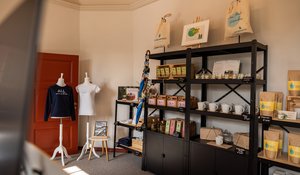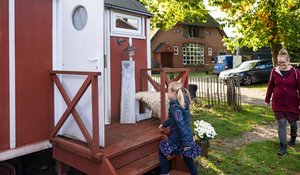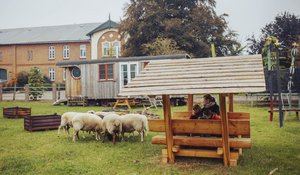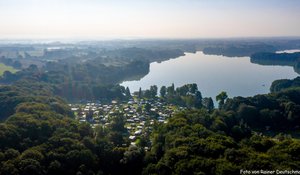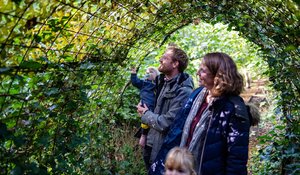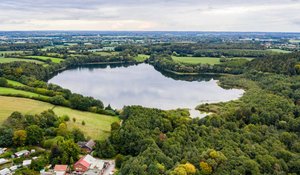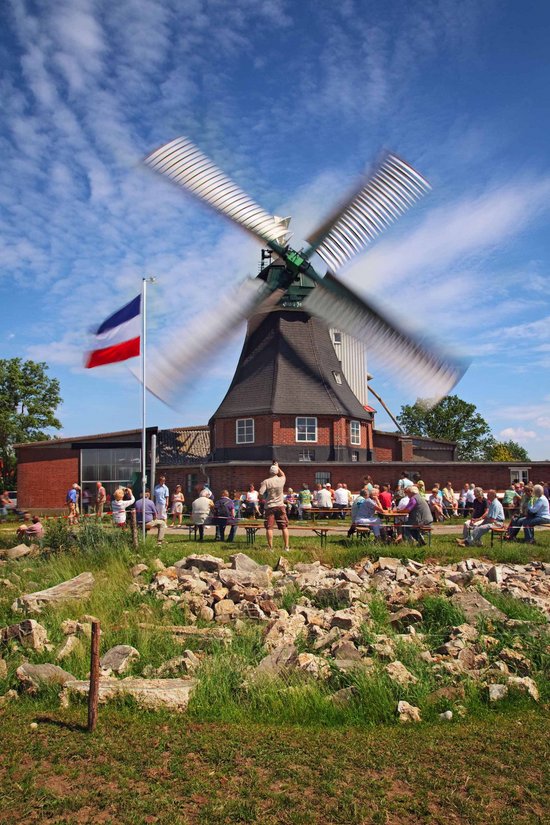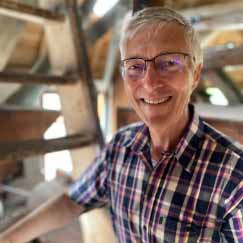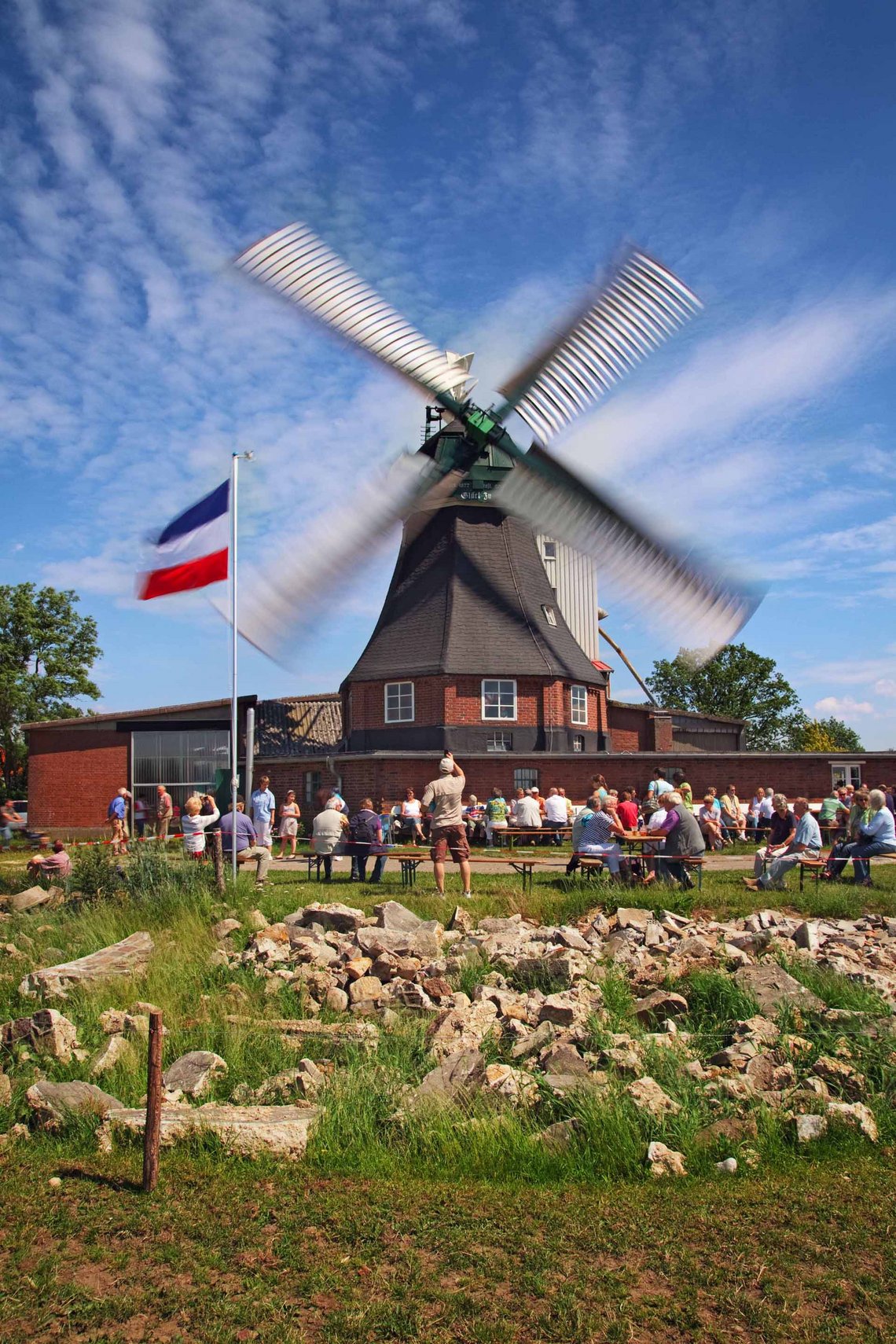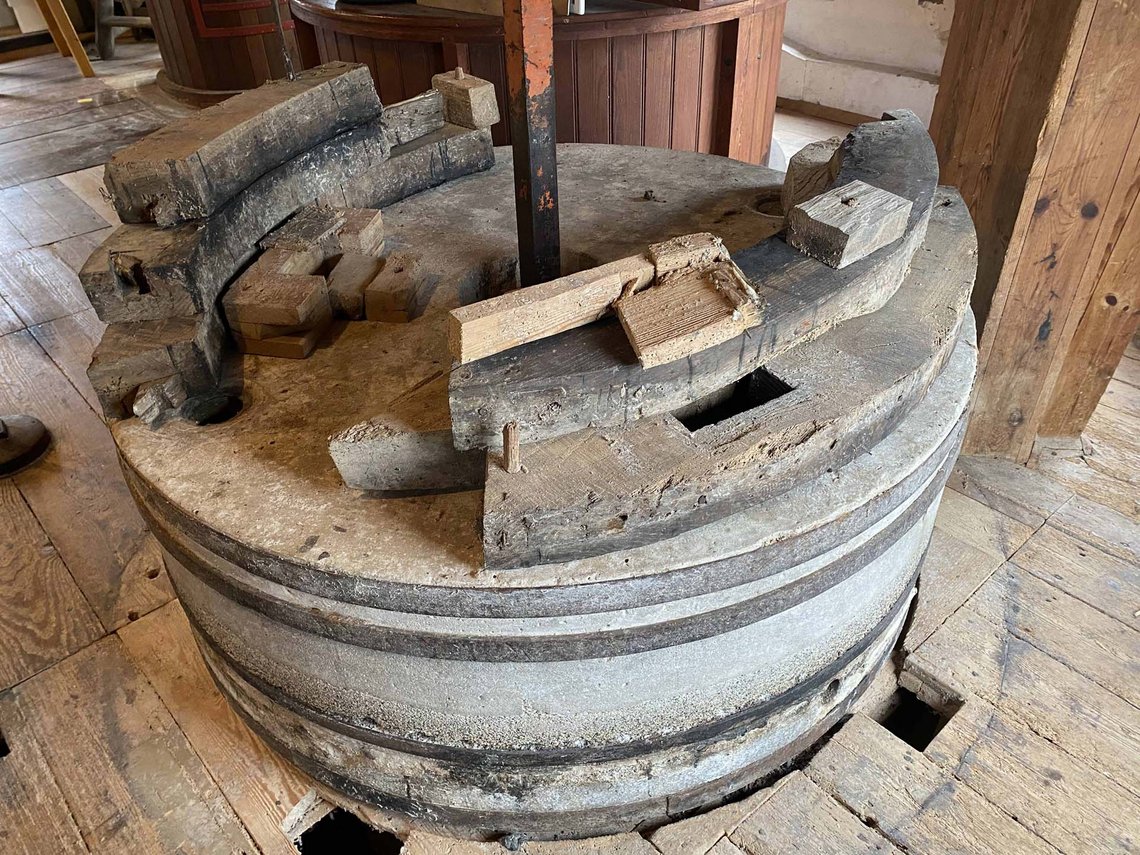The Götzberg Mill
Historic mills never cease to impress us, whether as characteristic landmarks or technical marvels. These structures enchant us when the wind sets the mill blades and the heavy millstones into motion.
This is also the case with the Götzberger Mühle mill in Henstedt-Ulzburg, which regularly opens to interested visitors. To everyone's delight, because it could have turned out quite differently: A blade broke off in a storm in March 2004, and the mill was due to be demolished. "The extensive and costly repair work was not economically viable for the Schlüter family who own the mill, so the citizens of the Henstedt-Ulzburg community founded the Mühlenverein Götzberger Mühle e.V." explains Henry Petersen. He is one of the founding members of the association that wants to preserve the privately owned mill as a cultural monument and also has a personal connection to this historic building from 1877. "As I was born and bred in Götzberg, I used to run across the paddock in front of the mill as a child and played there with my friends. My grandfather was also a mill worker there," Petersen says.
"In the past, every larger village had a flour mill. Around 1860, there are said to have been 60,000 to 65,000 mills in Germany, including paper, saw or mustard mills," explains the native of Götzberg. But many of them disappeared during industrialisation. And yet, for 2,000 years, the technological wonder of the mill was the most important machine for mankind. Fortunately, the Götzberg mill was spared the great mill death.
Since the foundation of the association, the Götzberg mill has increasingly become a tourist attraction in the region, particularly the mill tours. "The tours are not only exciting for children; many adults no longer have any idea of how a mill works," says Chairman Petersen. Visitors can experience with all the senses the heavy sacks of grain and flour, the physical efforts of the miller, the flour dust, the typical clattering of the milling chamber, the route from grain to flour during the mill tours. "This is also an impressive sight even for those who would not normally be so interested in technology and machines," says Petersen.
Once the filled sacks were carried back and forth by the mill assistant. One sack weighed approx. 100 kg, which was hard work for him. Despite all the strenuous activity, only two people worked in the mill, namely the master miller and his assistant. Many windows were used to provide light as there was no electric light when the mill was built.
The adjoining mill shop is open regularly, and is still run by the owners, the Schlüter family. Here you can find many different kinds of flour, but also spices, honey, nuts - that alone is worth a visit.
But the Götzberger Mühle has another trump card; As the highest elevation, it towers over Götzberg at 70 meters (above sea level). "You can imagine the unobstructed, panoramic view you have when you stand next to it on the mountain," enthuses Petersen. From up here, you can see the end of the Geestrücken ridge and look out over the Alster lowlands. In good weather, you can even make out the Köhlbrandbrücke in Hamburg, the TV tower and also the harbour cranes of the Port of Hamburg.
The Götzberger Mühle is often visited by kindergarten and school classes and is also booked for private mill tours as an "extracurricular place of learning". "Unfortunately, you can't get married here, because the mill is too small for big celebrations and events," says Petersen regretfully.
But a mill like this is also a great deal of work to run; this is something Petersen and his association members know only too well: "In spring, the mill is dusted off and brought out of hibernation, and is cleaned again in autumn after the many guided tours. Anyone with a talent for handicrafts or who would like to volunteer to help with maintenance or guided tours is welcome to join the association and can get in touch with us," says Petersen.
Text: Ulrike Pech









